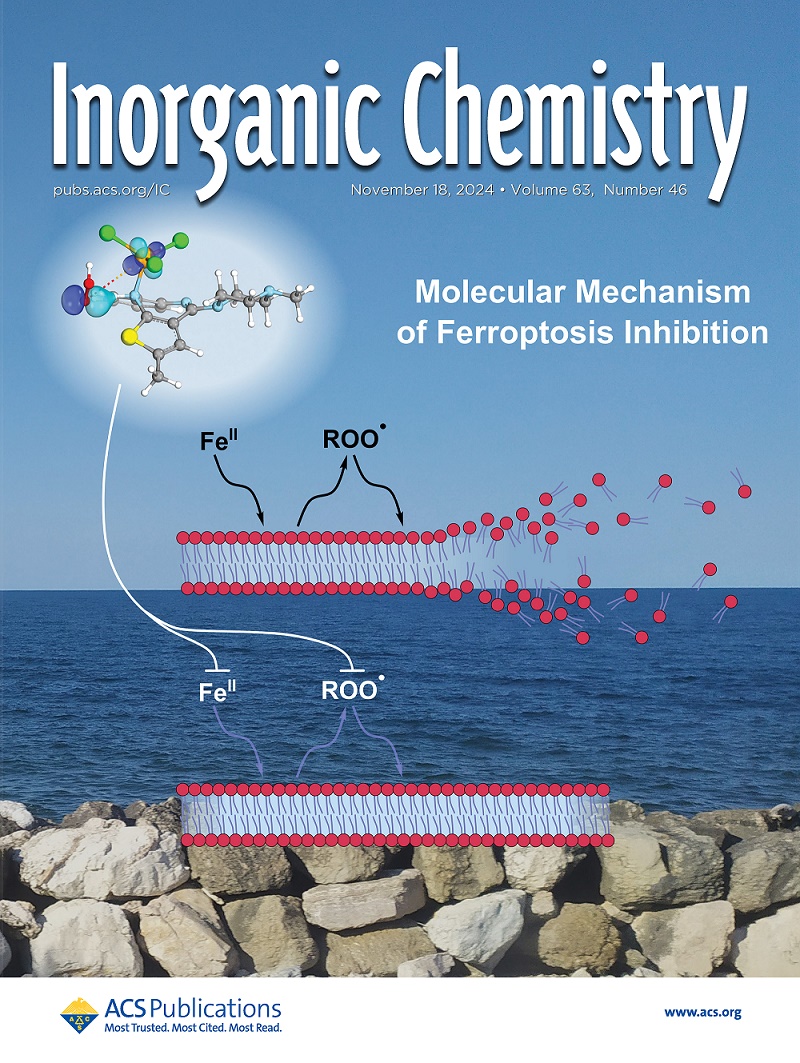Exploring Hollandite-Type KyVxTi8–xO16 (0.25 ≤ x ≤ 2) as Electrode Materials in Potassium-Ion Batteries (KIBs)
IF 4.3
2区 化学
Q1 CHEMISTRY, INORGANIC & NUCLEAR
引用次数: 0
Abstract
Hollandite-type oxides, KyVxTi8–xO16, x = 0.25, 0.5, 0.75, 1, 1.25, 1.5, and 2, are synthesized via the citrate method and evaluated as potential electrode materials for potassium-ion batteries (KIBs). Neutron powder diffraction (NPD) confirms an undistorted I4/m structure, uniform K content (1.4 ≤ y ≤ 1.6), and high potassium isotropic displacement parameter (Biso). This decreases significantly for x ≥ 1, correlating with tunnel narrowing and vanadium’s stronger polarization. Transmission electron microscopy (TEM) techniques, including selected area electron diffraction (SAED), annular bright field (ABF), and high-angle annular dark-field scanning transmission electron microscopy (HAADF-STEM) identify superstructure reflections assigned to potassium/vacancy short-range order along the c axis with disorder between tunnels. Magnetic studies reveal paramagnetic behavior down to 2 K, with antiferromagnetic interactions at low temperature except for x = 0.25 composition, which exhibits ferromagnetic interactions. The experimental magnetic moment suggests a low Ti3+ content, with notable deviations at x = 1.25. The electrochemical performance is assessed via galvanostatic cycling using 2.5 M potassium bis(fluorosulfonyl)imide (KFSI) in triethyl phosphate (TEP) as electrolyte. At a rate of C/10, 2 K+ are reversibly de/inserted per formula unit, comparable to K0.17TiO2. At C/5, K1.5V0.75Ti7.25O16 demonstrates a reversible de/insertion of 1 K+/f.u., highlighting its potential for rechargeable KIBs.

荷兰型KyVxTi8-xO16(0.25≤x≤2)作为钾离子电池电极材料的研究
通过柠檬酸法合成了荷兰酸型氧化物KyVxTi8-xO16, x = 0.25, 0.5, 0.75, 1,1.25, 1.5和2,并评价了它们作为钾离子电池(kib)电极材料的潜力。中子粉末衍射(NPD)证实其I4/m结构未变形,K含量均匀(1.4≤y≤1.6),钾各向同性位移参数高(Biso)。当x≥1时,这一特性显著降低,这与隧道变窄和钒的极化增强有关。透射电子显微镜(TEM)技术,包括选择区域电子衍射(SAED)、环形亮场(ABF)和高角度环形暗场扫描透射电子显微镜(HAADF-STEM),确定了上层建筑沿c轴分配给钾/空位的短程有序反射,隧道之间无序。磁性研究表明,顺磁性行为低于2k,在低温下具有反铁磁相互作用,除了x = 0.25的成分,它表现出铁磁相互作用。实验磁矩表明Ti3+含量较低,在x = 1.25处存在显著偏差。以2.5 M双(氟磺酰基)亚胺钾(KFSI)和磷酸三乙酯(TEP)为电解质,通过恒流循环评价其电化学性能。以C/10的速率,每个配方单位可逆地插入2个K+,与K0.17TiO2相当。在C/5下,K1.5V0.75Ti7.25O16显示出1 K+/f.u的可逆脱插入。强调了其可充电kib的潜力。
本文章由计算机程序翻译,如有差异,请以英文原文为准。
求助全文
约1分钟内获得全文
求助全文
来源期刊

Inorganic Chemistry
化学-无机化学与核化学
CiteScore
7.60
自引率
13.00%
发文量
1960
审稿时长
1.9 months
期刊介绍:
Inorganic Chemistry publishes fundamental studies in all phases of inorganic chemistry. Coverage includes experimental and theoretical reports on quantitative studies of structure and thermodynamics, kinetics, mechanisms of inorganic reactions, bioinorganic chemistry, and relevant aspects of organometallic chemistry, solid-state phenomena, and chemical bonding theory. Emphasis is placed on the synthesis, structure, thermodynamics, reactivity, spectroscopy, and bonding properties of significant new and known compounds.
 求助内容:
求助内容: 应助结果提醒方式:
应助结果提醒方式:


